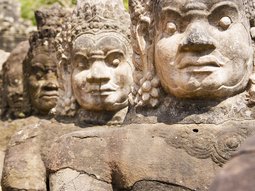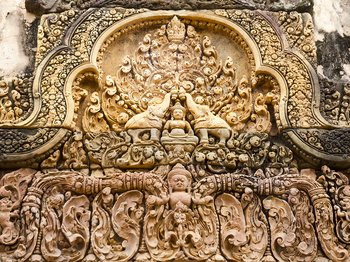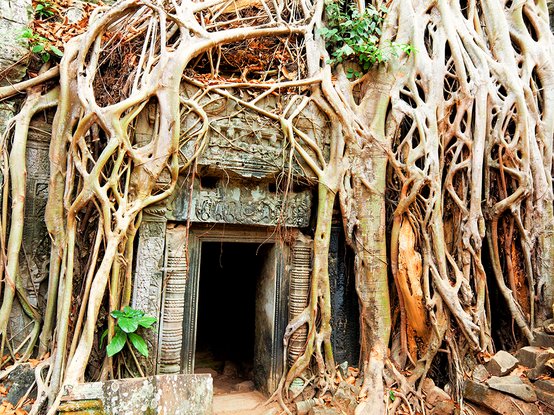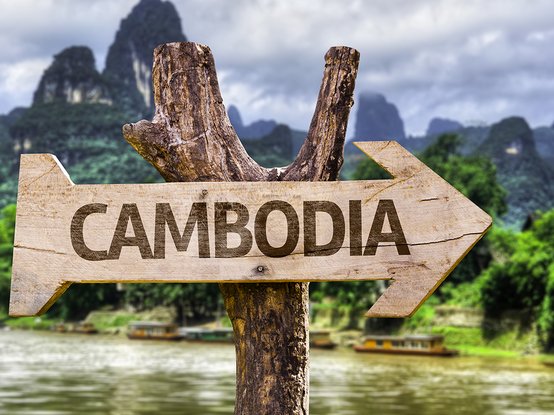Angkor
History
Visiting
Angkor, the largest temple complex in the world today, should be visited over at least three days. This gives you enough time to see the most important monuments. Hotel staff can recommend a variety of suitable routes and you can even hire a tuk-tuk driver to take you around. You may also wish to explore the ancient city by bike. The official routes through the complex are the "Small Trail" and the "Great Trail". During the winter months we recommend setting off around 5:30 am so that you can witness the sunrise over the ancient cities magnificent structures. The cool morning temperatures are also ideal for exploring. If you choose to hire a tuk-tuk driver he will first bring you to the entrance of the UNESCO World Heritage Site where you'll be able to buy your single or multi-day ticket. He'll then take you to all of the temples you wish to see. A single-day ticket costs $20 USD and a three or seven-day ticket costs $40 USD or $60 USD, respectively. You can pay in US dollars, Cambodian Riel, Thai baht, or Euros. Additionally, there are a number of temples further outside of Siem Reap that are worth visiting. These excursions will take you past fields and through small villages and give you an insight into the average life of Cambodians.
If you climb the well-preserved temple of Angkor then you'll have a magnificent view of the surrounding area. Tread carefully on your descent and keep to the outside edge because the stairs are very steep and slippery. If you happen to meet a praying monk in the ruins you should leave a small donation as a sign of respect. Sturdy footwear is recommended but you can walk around in flip flops comfortably. You should always have sunscreen, insect repellent, sunglasses, and plenty of water with you. As you'll be visiting religious buildings, be sure to cover your shoulders and knees. Women can, for example, wear a shirt and tie a sarong over shorts.
Angkor Thom
Next, we recommend visiting Angkor Thom, which was built around 1200 by King Jayavarman VII. This former town is about 9 square kilometers and has the Bayon temple at its center. The temple is decorated with numerous reliefs depicting scenes from daily life and mythology. There are also more than two hundred stone-carved faces smiling mysteriously built into the structure. To the east of the Royal Palace there is a stone terrace, which is 350m long, 14m wide, and lined with elephant statues (partially restored). On the terrace you'll notice wooden pavilions from which the king and company would've watched processions.
Angkor Wat
The Angkor is the most important and most famous of the more than 100 temples in the Angkor complex. This beautiful structure was built by 120,000 slaves over the course of 37 years in the 12th century. It was originally a Hindu temple at the center of a roughly 2-acre city where up to 20,000 people are said to have lived. However, in 1200, under King Jayavarman VII, the Angkor Wat was converted into a Buddhist sanctuary. A causeway leads to the atrium surrounding the sanctuary. To get to the 13m high gallery, you will have to wait in line for some time.
Other Temples
Along the two official trails there are several smaller temples worth visiting. Some of these have a very mysterious aura as they are overgrown with the roots of huge trees and brush. Half-day trips will bring you to more distant sanctuaries such as the Banteay Srei. This was built by the Brahmins Yajnavaraha rather than a king (Brahmin = member of the top caste of Hindus). An impressive dam which is over 70m long leads to the temple. The dam is decorated with innumerable representations of Apsaras and devatas – celestial nymphs and goddesses.





